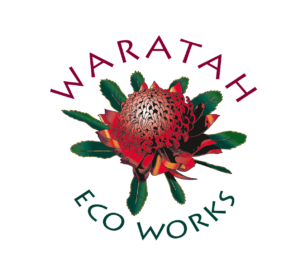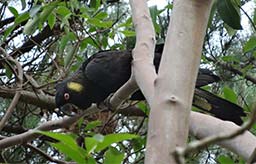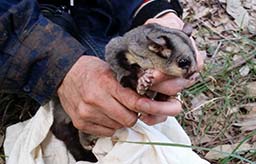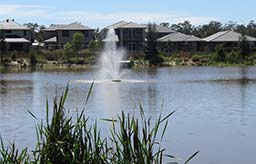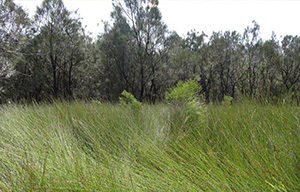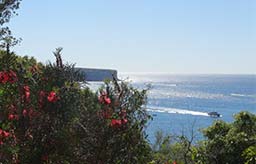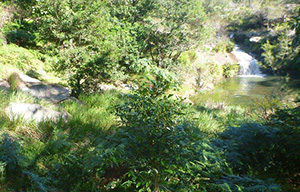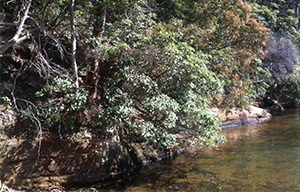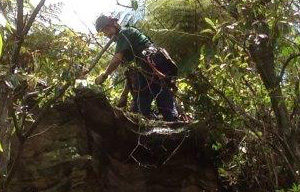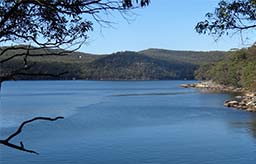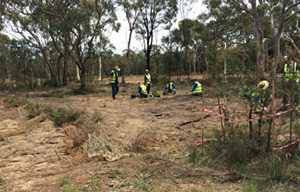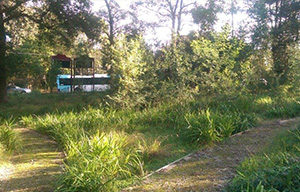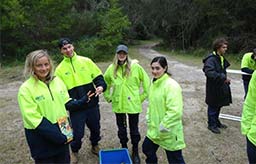Waratah Eco Works
Projects
Waratah Eco Works undertakes bush regeneration, ecological restoration and management planning for private clients, local, state and commonwealth Government Agencies including Willoughby Council and the commonwealth Sydney Harbour Federation Trust. WEW undertake project ecological services for the construction industry for clients including Laing O’Rourke and the Department of Defence. WEW prepare plans of management for local and state government agencies including Hornsby Council. WEW prepare ecological and environmental assessments for private clients and local government including Blacktown City Council.
Ecological Restoration City of Willoughby
(Willoughby City Council)
Learn MoreWEW implements bushland management strategies at various sites across the Willoughby local government area, in accordance with Willoughby City Council’s Bushland Management Plan. This contract has extended over a 19-year period. The works have included all facets of urban bushland management including bush regeneration, ecological restoration, revegetation, creek bank armouring, foreshore restoration and landscaping works including track and boardwalk construction. This long term contract has enabled WEW to gain an understanding of the impacts of bush regeneration works and techniques in the short and long term and to develop an appreciation of the dynamic nature of ecological management.
Moorebank Unit Relocation Project Ecologists
(Department of Defence and Laing O’Rourke)
Learn MoreWEW were commissioned as project ecologists on this major project. The works included preparation of a fauna management plan for the redevelopment of Holsworthy Army Base, identifying habitat trees across the development footprint, undertaking pre-clearing surveys and relocating fauna, rescue and relocation of fauna from the development area during clearing works, fauna trapping in target habitat areas and release into natural areas on the base, installation of nest boxes in natural areas on the Holsworthy Army Base, management of dangerous fauna, threatened species survey and reporting.
Waterside Estate Riparian Vegetation Management and Water Quality Monitoring
(Len Robinson Strata & Community Management and the Waterside Community Corporation)
Learn MoreWEW have undertaken riparian land vegetation management and maintenance at Waterside Estate at Penrith since 2014. The work includes but is not limited to: bushland restoration and regeneration; environmental weed management; bush regeneration; riparian restoration; riparian plant supply and installation; aquatic plant management; rubbish collection and disposal; and liaison with landholders and the site manager. The contract has been conducted since 2014 it is complimentary to the work undertaken by Geoff Hunter of Waratah Eco Works monitoring the water quality in the lake system at the Waterside Estate. The project has enabled WEW to develop a strong understanding of bush regeneration on the Cumberland Plain in a dynamic riparian environment.
Sydney Desalination Plant, Conservation Area Vegetation Management
(Veolia)
Learn MoreWEW undertakes weed management, bushland management planning, ecological restoration and monitoring of the conservation area at the desalination plant in Kurnell. The site covers an area of around 15 hectares and contains four endangered ecological communities: Swamp Sclerophyll Forest on Coastal Floodplains (SSFCF); Sydney Freshwater Wetlands (SFW); Kurnell Dune Forest (KDF); and Swamp Oak Floodplain Forest (SOFF). The conservation area also supports resident Grey headed Flying Foxes listed as vulnerable at the state and national level. In addition, other endangered species recorded from the site include the Green and Golden Bell Frog, the Wallum Froglet and the Large-footed Myotis. Works here have used the traditional Bradley bush regeneration method along with a variety of hand weeding and chemical treatment techniques.
Sydney Harbour Ecological Restoration
(Sydney Harbour Federation Trust)
Learn MoreWEW has held this contract since 2006 it has included ecological restoration, bushland management and fauna management (nest box installation) at key high profile harbour side sites including: North Head Sanctuary; Middle Head; Georges Heights; Chowder Bay; Cockatoo Island; and Woolwich Docks. The work has included bush regeneration, plant installations, track construction and maintenance, landscaping, soil erosion control works, rock armouring of drainage lines, flora and fauna identification, ecological and asset protection zone burn preparation, post fire weeding, target weeding, volume spraying and pathogen control.
Ecological Restoration Foreshore Catchment
(Mosman Council)
Learn MoreWEW undertake ecological restoration including primary and maintenance weeding and revegetation across an entire catchment of foreshore reserves extending from the Spit Bridge along the western foreshore to Quakers Hat Bay. The reserves managed include Spit Reserve, Quakers Hat Bay south, Quakers Hat Park and Quakers Hat Bay north and Joel’s Reserve. Works for this contract have included bush regeneration and maintenance works, erosion control, seed collection and provenance plant raising, site preparation and planting, ecological burn preparation and post fire weeding, along with broadscale public amenity/bushland landscaping.
Ecological Restoration North Sydney Local Government Area
(North Sydney Council)
Learn MoreThis contract requires bushland management of two iconic Sydney Harbour Foreshore sites in the North Sydney local government area (LGA) Badangi Reserve and Cremorne Point Reserve. Works for this contract include but are not limited to: environmental weed management; targeting noxious weeds and Weeds of National Significance (WONS); maintenance of habitat zones; erosion control and revegetation works; installation and monitoring of nest boxes; ecological burn preparation; post fire weeding and assessment; and seed collection and contract growing for assisted regeneration. This contract has provided the opportunity for WEW staff to undertake Aboriginal Awareness Training in relation to bush regeneration adjacent to sacred sites (primarily middens and scar trees in our contract areas). This training has proved valuable to our team’s approach to site management and enhanced their understanding of Indigenous heritage management needs.
Ropes Access Targeted Weed Treatment Manns Point
(Lane Cove Council)
Learn MoreTargeted weed treatment in three key work areas across cliff sites at Manns Point on Sydney Harbour. Industrial Ropes Access and Ropes Work Positioning Systems are used by specially qualified WEW staff to undertake these works in areas that cannot be safely accessed on foot. WEW has planned and delivered weed control in this challenging environment to meet a specific project brief to treat key weeds in high visibility cliff edge and cliff top areas.
Cowan Waters Weed Management
(NSW Office of Environment and Heritage)
Learn MoreSix priority sites from Bobbin Head to the Hawkesbury River in the Cowan waters were identified for targeted weed control. The potential contribution of weed control to the maintenance and enhancement of biodiversity values at the priority sites is considered high. All sites are surrounded by intact native vegetation and all adjoin the Coastal Saltmarsh endangered ecological community (EEC) listed on Schedule 1 of the NSW Threatened Species Act 1995. Sites at Apple Tree Bay, Waratah Bay and Jerusalem Bay also contained additional terrestrial EECs. This contract has been conducted over a period of 4 years. This has allowed WEW to progressively treat target weeds and identify strategies that are both effective and efficient given the management issues around boat only access and the limited frequency of visits.
Moorebank Biodiversity Offset Planting
(OPEC Systems and the Department of Defence)
Learn MoreThis project involved implementing extensive revegetation at Moorebank NSW to achieve a biodiversity offset for the Moorebank Unit Relocation Project. WEW was commissioned by OPEC Systems and the Department of Defence to undertake revegetation of over 1 hectare with 40,000 native plants.
The area to be revegetated had previously been used as a grenade range and was, immediately prior to revegetation being progressively cleared of unexploded ordinances (UXOs) by OPEC System’s specialist staff. Key management issues included the minor areas of tree cover and subsequently lack of shade for young plants in the revegetation area, the potential for predation from hares and wallabies and the potential presence of contaminated material and/or UXOs. Due to delays early in the project the site did not become available to WEW until early summer. In order to achieve the required timetable WEW tripled the original work force on the site and was able to plant the required 40,000 plants in just over 3 weeks. A post planting water regime and summer rains ensured plant survival rates were high.
Cheltenham Girls High School Revegetation
(Department of Education and Training)
Learn MoreWEW was contracted in June 2012 to implement a vegetation management plan at Cheltenham Girls High School (CGHS). The plan detailed the tasks required as part of development consent conditions to revegetate an area of Sydney Turpentine ironbark Forest (STIF) endangered ecological community (EEC). The revegetation site contained canopy species consistent with the STIF EEC however little if any native understorey remained. The vegetation plan has been progressively implemented and will cover a total period of five years. During the initial two year period ground preparation, planting, watering, plant care, maintenance weeding works, rubbish clearance and track maintenance were undertaken. A total of 20,581 tubestock were installed in the vegetation management zones at CGHS in years 1 and 2. Supplementary planting of 100 tubestock was undertaken in year 3 of the project. Nesting boxes designed for native fauna were constructed and installed by WEW in Year 1 of the project and inspected regularly. Evidence of habitation most likely from bird species have been found in three of the boxes. Crimson Rosellas, Rainbow Lorikeets and King Parrots were observed around and on top of several nesting boxes.
Green Army Environmental Education
(NSW Office of Environment and Heritage)
Learn MoreWEW were commissioned to plan and deliver practical and theoretical environmental education focused on bush regeneration and bushland management planning for the NSW OEH. WEW delivered onsite training to the group which included native plant identification, mapping and planning of vegetation management works to address a specified scope of works, group presentations and a facilitated question and answer session.
